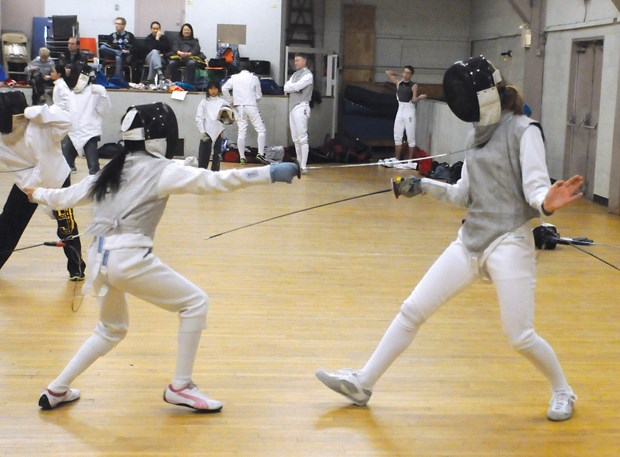Jabbing, attacking and counterattacking to outwit an opponent, all while trying to score points with the prick of a sword on a mat less than two metres wide.
The sport of fencing is centuries old and still a challenging but popular sport.
Zbigniew Pietrusinski, maitre d’armes at the North Vancouver Fencing Club, says some kids first get the notion to try fencing after seeing it in movies or on television.
“They find that it’s completely a different thing, a different thing than you see on the screen, a different thing when you’re doing the real fencing,” says Pietrusinski.
But most of the pupils who enjoy fencing continue on for a long period of time, he adds.
“I have fencers who started with me and they are now coaching and doing different clinics around the Vancouver area.”
Though fencing is an individual sport, Pietrusinski says there is no one type of personality that best suited for it.
“There’s a variety of personalities,” he says. “Usually someone very active and outgoing will be really good for this.”
On the other hand, he notes, there are quiet people who like to think about what they’re doing and how they’re going to plan the next touch, and how they are going to score.
The North Vancouver Fencing Club has been in operation since 1986 and has more than 40 members.
Pietrusinski says they run practices four times a week, and although the ages of their members range between 10 and 30 years old, the younger kids outnumber the adults. The best age to start, he says, is 10 years old.
“The attention span is longer,” says Pietrusinski. “The physical ability, they are pretty good at this age and they can move really fast.”
The biggest challenge for beginners is mastering technique.
“It takes a long time to acquire. It’s a long process because you have to build first your physical strength, like stability (and) co-ordination,” he says, adding specific movements to fencing such as foot work and hand-eye co-ordination then follow.
There are three weapons used in fencing depending on the event (foil, epee and sabre), each with a different mode of scoring points. Pietrusinski says fencers develop certain moves with each weapon and then attempt to improve upon them. Movements also determine which weapon newcomers will start with.
“I used to start from foil and then I would progress to see how they were doing and if they had very good technique,” says Pietrusinski.
If movements were small they would stay with foil, says Pietrusinski, but if movements were more slashing or cutting, then sabre would be the best choice. Taller people and those “who like to play games with opponents” are switched to epee.
Cross training is also an important component of fencing.
“Fitness level has to be pretty good,” says Pietrusinski. “I’ve noticed that if you improve your fitness level, you really excel in fencing.”
Fencing bouts take place on grounded mats 14-metres long and 1.5-metres wide, creating boundaries the competitors must stay within to score a point. An electrical scoring device is used so when a competitor touches an opponent with the weapon, a scoring light, either red or green, will appear on the side of the scoring fencer.
Pietrusinski says the popularity of fencing grows every year.
“Lots of people are going through the program. Some of them will do this for a few years and they will move on,” he says, while others will continue on after high school and into college or university.
For those looking to try fencing, Pietrusinski suggests taking any one of the clinics or programs offered on the North Shore, then continuing on to the fencing club where members are outfitted with equipment.
This story was written as part of our special Spring Break feature called Kids Biz.



